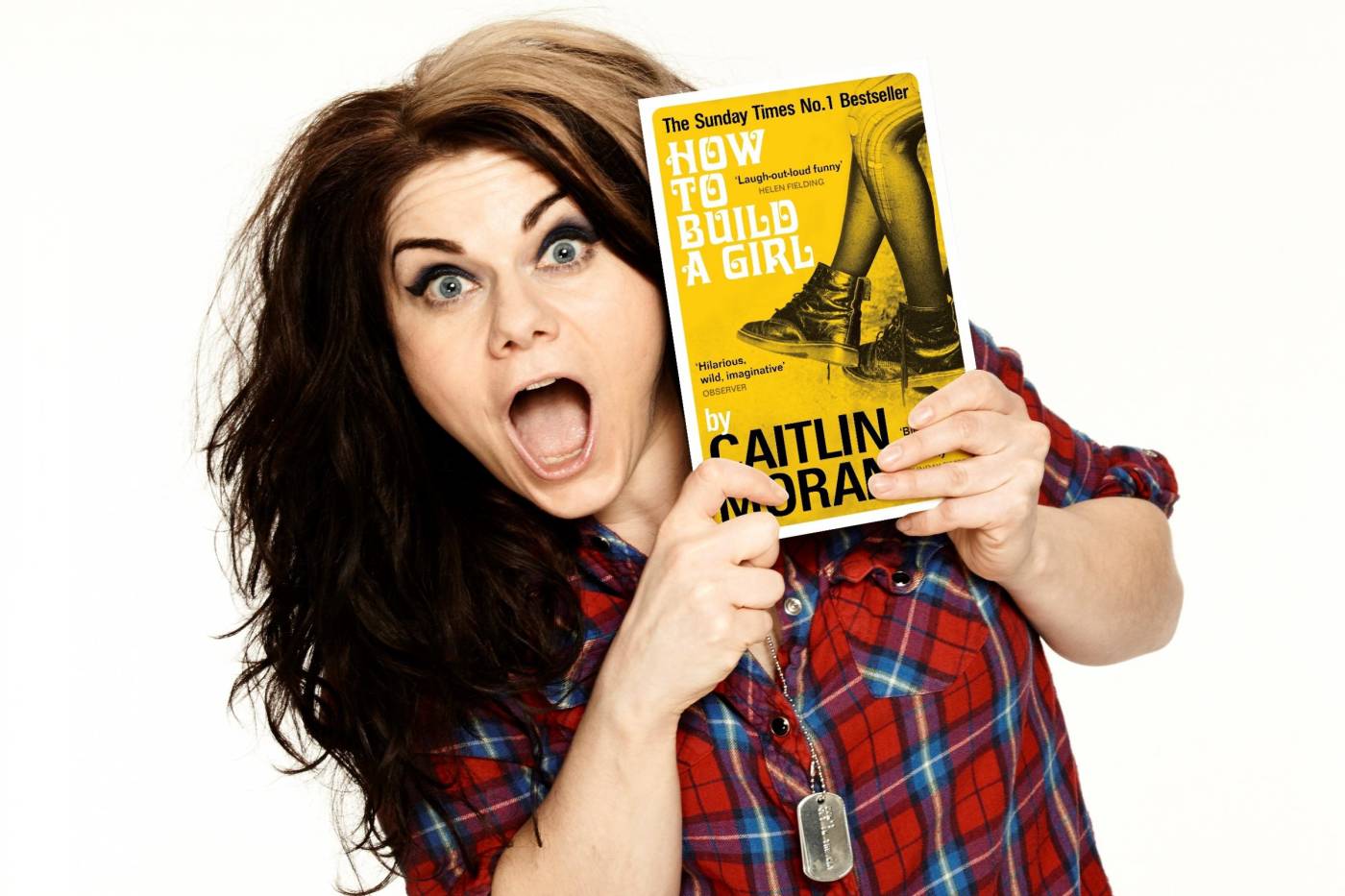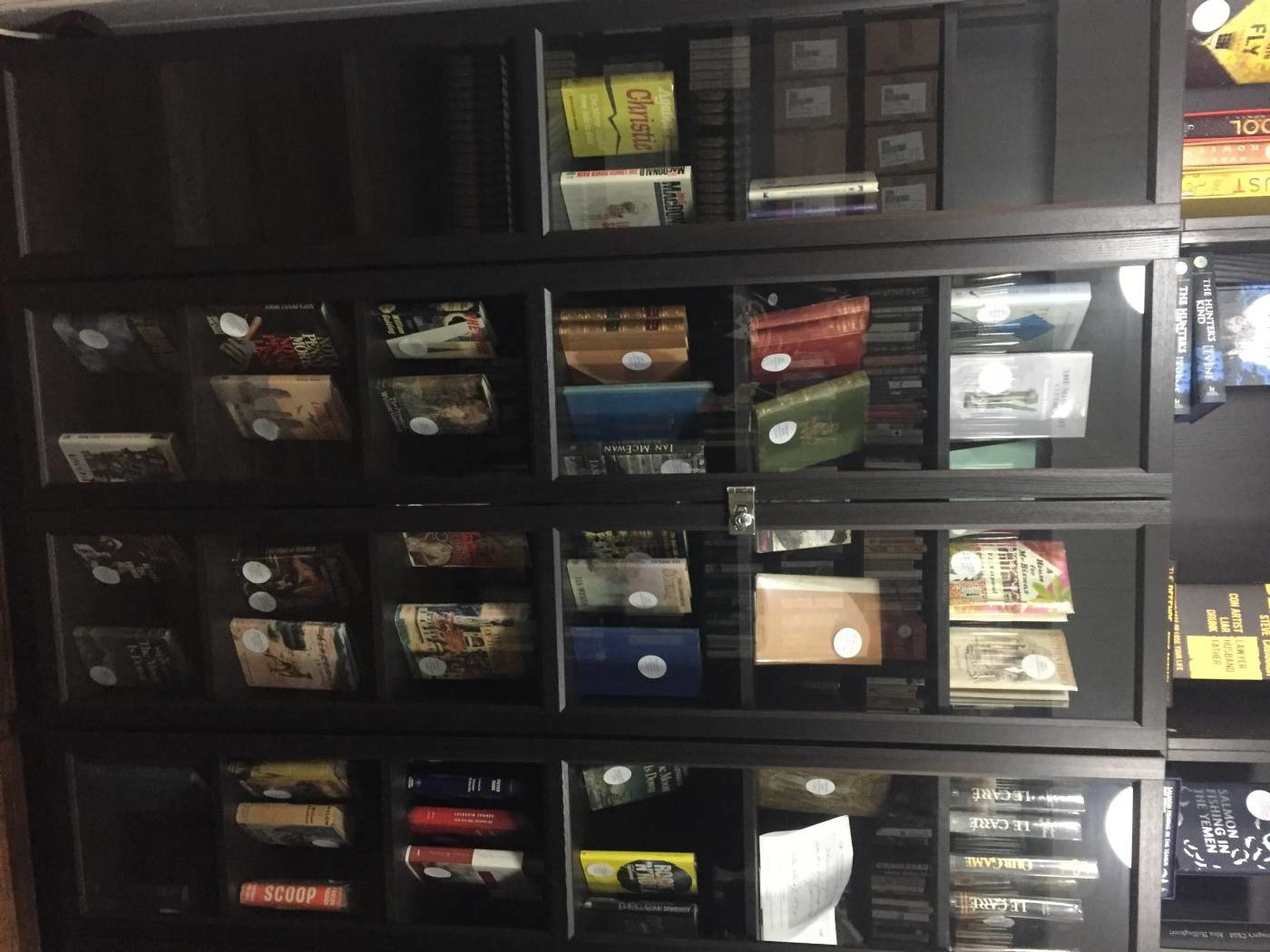A Caitlin Moran book (any, I’m not fussed) has been on my reading wish-list forever.
Gatwick Airport, back in the hazy summer of 2015. Instead of perusing WHSmith's reading selection fastidiously I flew about recklessly grabbing magazines from the shelves as if I were a contestant on Supermarket Sweep, buying an over-sized bottle of water just to nab a free Telegraph and seizing the first book within reach. Knowing full well I was due in Departures NOW.
"Ah, a Moran!" said my brain, as the bright lemon cover of How to Build a Girl caught my eye. "That'll be a good start". (Swiftly followed by "Argh, where's my sodding boarding pass?!").
Well, what a cracking start to #MissionMoran it proved to be. I chomped through HTBAG in two days flat on holiday, effectively ignoring my husband on the Santorini beach as he splashed about in the sea dejectedly with a snorkel and a sunburnt back. Under the cool shade, I snorted with laughter. Blubbed. Reminisced. Felt exuberant. Wrote a whole blog post about it rather than just a section on My 2015 Media Diet.
Off the bat, I knew this was my kind of book and that Johanna Morrigan was my kind of protagonist. She is inquisitive, imaginative, bright as a button and eager to learn about EVERYTHING on the fringe of her, at times, rather shit life on a Wolverhampton council estate with an unconventional family. When we first meet Johanna she is fourteen and wants to build a new girl. She escapes to London to work in the music press. It is the 1990s.
This is why I loved it.
There are laugh-out-loud bits in abundance. ‘“My life is basically The Bell Jar written by Adrian Mole” remarks Johanna. There are references to Mark Curry and DJ Mike Read of Radio 1 fame which sparked fond memories of being an awkward adolescent and growing up in 80s/90s Britain. Dogs that look like Limahl. Pebble Mill. McDonald’s’ Hamburglar. Family weddings where Star Trekkin’ by the Firm is played. Biscuit tins that emit a piggy snort when a biscuit is taken (“which even my balmy exuberance can't help but interpret as slightly judgemental”). There are way too many funny bits to mention here without ruining your fun, it is swarming with them. The whole book is a funny bit.
Yes, there is bleakness, inequality and the class divide but dealt with in a brilliantly witty way. It’s been said there are semi-autobiographical undertones to HTBAG, reflecting Moran’s own upbringing in a council house in Wolverhampton and a career that started in music journalism, but she is insistent in the Author Note that it is a fictitious work. Desperate to escape the drudgery of daily life and shoplifting black Rimmel eyeliner from the chemist, Johanna’s key goal is to move to London and be hot; fourteen of course being the age when looking hot is everything. She imagines London will be like a very large room and “on walking in, the entire city will go ‘COR! BLIMEY! YOU DON’T GET MANY OF THEM TO THE PAHND! like Sid James”. Back on the chic Greek beach, far far away from London, Sid and cockney accents and surrounded by bronzed, oiled goddesses drinking iced coffee, I laughed my head off.
There are touchingly affecting moments. Johanna’s family are skint, completely and desperately skint. She enters a competition for 'budding young Midlands' poets' to save the family and win a cheque for £250 which also includes the opportunity to read the poem out on Midlands Weekend, watched by pretty much everyone in the West Midlands. With a steely determination, a hugely clever brain and the worry of money hanging over her head, she wins. Moran’s description of Johanna’s TV appearance is lively, poignant and sharply observed but when Johanna sees herself through the camera’s monitor after not really having seen herself before (there are no mirrors at home) she sees an appearance she considers pale, round faced, fat and not beautiful at all and feels her heart break, it is a genuinely moving moment. Eventually, the £250 prize money goes to Johanna’s Dad - £190 to fix the car, £30 on the overdraft and £30 in The Red Lion.
There is heaps of unapologetic sex and masturbation - the latter on page one no less. Upon reviewing How to Be a Woman, Germaine Greer wondered if Moran would regret talking about masturbation so openly, but I applaud her bravery. To the best of my knowledge she is the only person who could include a reference to a googly-eyed draft excluder in a romping, raucous sex scene.
Yet, I was mostly drawn like a magnet to the music references which I soaked up like a sponge. When Johanna decides resolutely to upgrade herself, to build a new girl so as not to be her anymore, she creates an alter-ego named Dolly Wilde (after Oscar Wilde’s niece) and feverishly sets out to "be a self-made woman…to conjure myself, out of every sparkling, fast-moving thing I can see". She discovers records shops (which she observes are "not for womenfolk"), free music magazines, John Peel, NME and Melody Maker in the Central Library, the riot grrrl movement, and so much more and there she has it - her way out. After two years of building Dolly, she bags an interview at Disc & Music Echo and this is where the real fun and discovery begins.
There were so many things I could relate to in sixteen year old Johanna, now as a thirty-seven year old woman, whose version of the Central Library in 2016 is Spotify, Twitter, online magazines and going to gigs and soaking up everything there is to know about old and new music.
Going for an interview as a music journalist in London is exactly what I wanted to be doing when I was a mid to late teenager, possibly a direct result of having read every single issue of Smash Hits magazine religiously before it went out of publication. I was already in the Big Smoke of course, but wearing a Benetton jumper and sporting a crunchy perm. Inspired by the grunge movement I then started wearing clumpy boots and being morose and listening to Nirvana and going to parties with my friends and head banging to impress the boys at our youth club. Then having to have a can of Deep Heat sprayed on my neck the next day to ease the pain of turning my head from side to side.
When Johanna attends her first ever gig as a writer to see The Smashing Pumpkins it is described so gorgeously (only Moran could take the intense, pushing, leading dance of a mosh to be a tradition for the opening song and compare it to ‘Oops Upside Your Head’ at a wedding when everyone rows across the floor), that it evoked memories of me covering my first ever gig for Jazz FM. I was ridiculously excited, terrified, out of my depth, scribbling words into a notebook, drinking copiously. Grinning a lot at strangers.
Selfishly, I also thought it was only me who went to gigs and got slightly angry with everyone else for being into the singer they thought was their special secret. When Joanna attends John Kite’s gig, after striking up a friendship with the boozy, filthy, voluble singer and falling hopelessly in love with him, the description is dreamy and powerful and perfectly evokes the ‘EVERYTHING IS SO UNBELIEVABLY AMAZING AND IMPORTANT’ feeing that dominated my early teens (and hormones). I read this passage at the top of a rock on Ancient Thera, an antique city on the ridge of the Messavouno mountain on Santorini, surrounded by undulating rocks and the twinkling Aegean Sea as we waited for the mini bus in the shade sheltered from the blistering sun. Yet in my head I was in the loud and hot Irish theatre watching John Kite from the sidelines, crying.
So, in summary, HTBAG, made my heart hurt with happiness and at times, despair. Let’s face it, we’ve all been Johanna Morrigan at some point in our life, trying to be someone we’re not and learning painfully but excitingly along the way. Maybe we still are.
It is hard to put into words how enjoyable it is and in fear of sounding too effusive, I’ll leave the clever words to Moran. All I know is this book which moves with such velocity with its humour, intelligence and bang on take on modern feminism made me feel inexplicably, ridiculously happy and light.
Often my regret in not going to university, instead deferring my place at Chichester to study Women's Studies and English Literature and never going, rears its ugly head. Then I recall from an interview that Moran didn’t go to uni and, well, she's a f***king genius so who the heck cares.
Newly added to the Moran wish-list is Moranifesto, which I understand features 'the same old ass-hats'. I can't wait.














